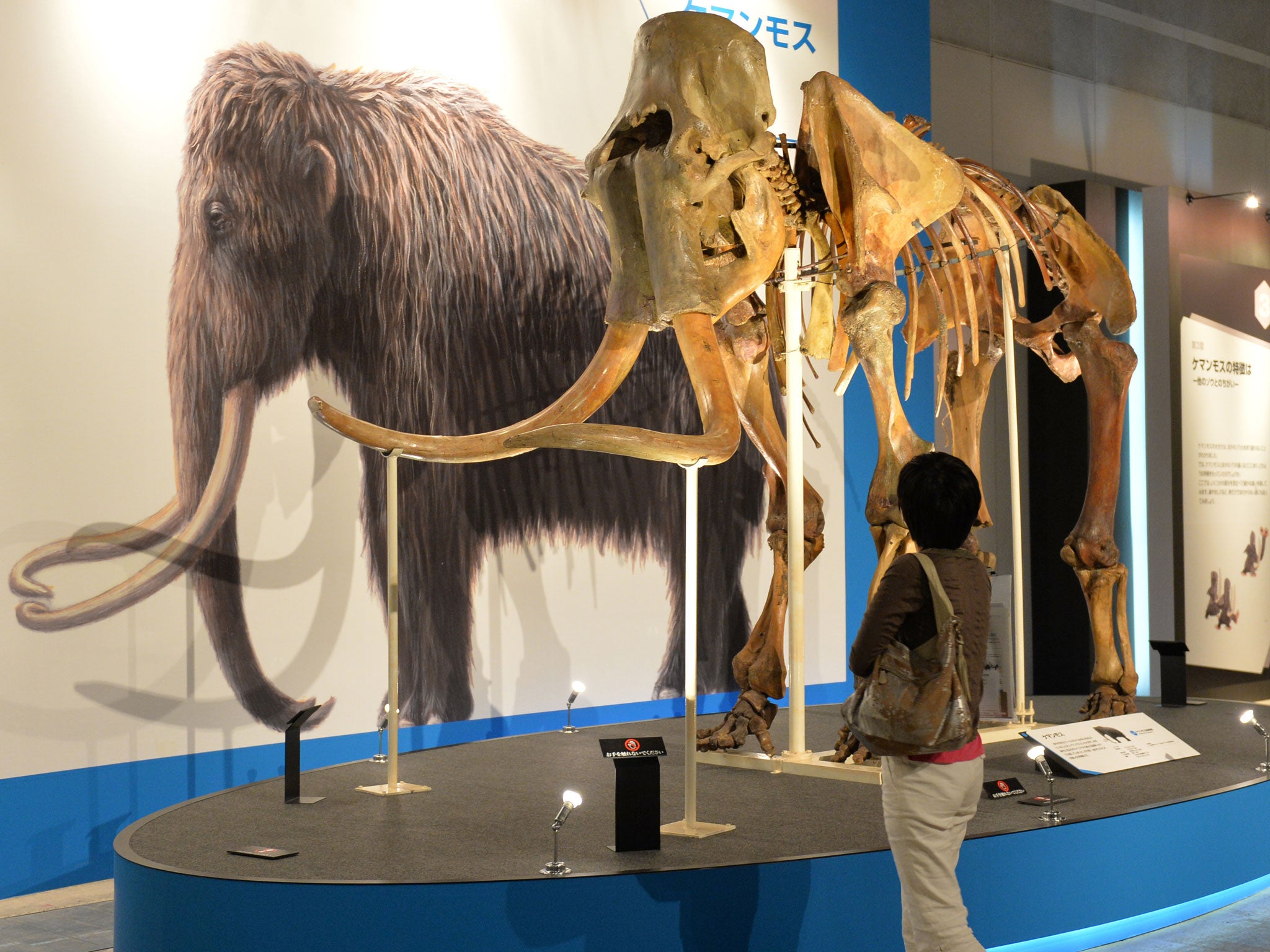The Independent's journalism is supported by our readers. When you purchase through links on our site, we may earn commission.
Could the Woolly Mammoth be brought back to life?
De-extinction scientists want to bring back vanished species by using new genomic technologies

If you thought the woolly mammoth and the dodo were gone for good, then think again – scientists in America are working to bring vanished species back to life.
Aided by new genomic technologies, biologists at The Long New Foundation in California are investigating the possibility of resurrecting creatures such as the sabre-toothed tiger.
The Revive and Restore project aims to achieve the “genetic rescue of endangered and extinct species”.
On their website, The Long New Foundation says: “The DNA of many extinct creatures is well preserved in museum specimens and some fossils. Their full genomes can now be read and analysed.
“That data may be transferable as working genes into their closest living relatives, effectively bringing the extinct species back to life.
“The ultimate aim is to restore them to their former home in the wild.”
In an interview with the New York Times Magazine, Steven Brand, the project’s president and co-founder, spoke about a plans to create a population of woolly mammoths in a Siberian preserve called Pleistocene Park, which was created by Russian scientist Sergey Zimov.
“We’ve framed it in terms of conservation,” Brand said. “We’re bringing back the mammoth to restore the steppe in the Arctic. One or two mammoths is not a success. 100,000 mammoths is a success.”
But it’s not quite Jurassic Park just yet.
Currently, the project is working to resurrect the passenger pigeon, which became extinct in 1914.
Ben Novak, the foundation’s research and science consultant, told the publication that the construction of the passenger pigeon genome is underway and that the scientists hope to have reintroduced the birds into the wild by 2060, if all goes according to plan.
And there’s certainly excitement in the scientific world surrounding the possibilities.
In a paper published in Science, the ethicist Hank Greely and the law professor Jacob Sherkow, both of Stanford University, argued that de-extinction ought to be pursued on the basis that it would “surely be very cool”.
However, many conservation biologists are concerned about the implications of the movement, questioning the logic of bringing back species whose environments have been destroyed, as well as the potential for creating a breeding ground for new diseases.
“We have answers for every question,” Novak told the New York Times Magazine.
“We’ve been thinking about this a long time.”
Then again, we all know what happened in Jurassic Park…
Join our commenting forum
Join thought-provoking conversations, follow other Independent readers and see their replies
Comments
Bookmark popover
Removed from bookmarks